#the willows
Text
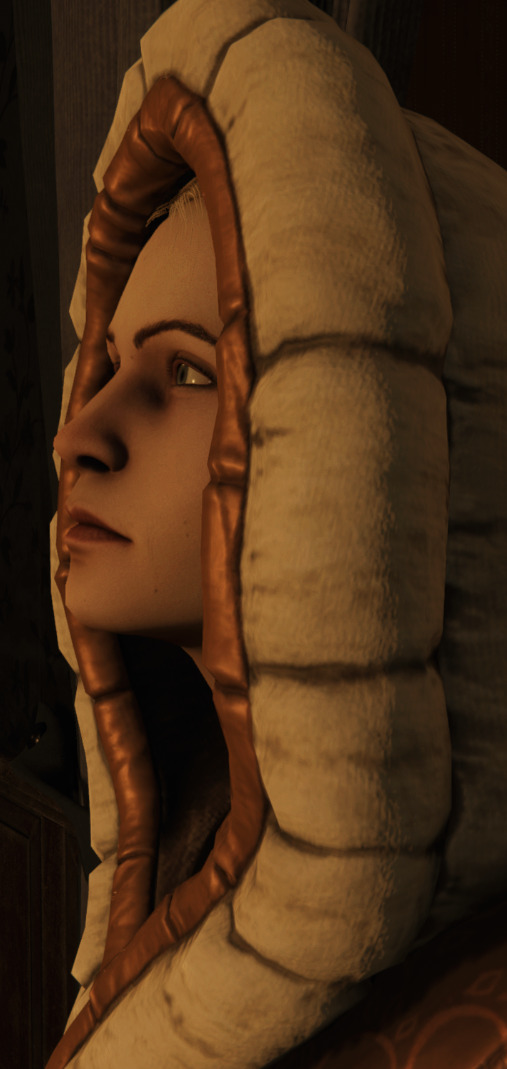

It's throw yourself in the river, brick yourself in the basement, or get sandboxed… why are you looking at me like that?
anna angel
72 notes
·
View notes
Text

Ok, tried to post this before but it seemed to disappear so let’s try again 😅 @see-arcane you said there should be a Monster High kid for Algernon Blackwood, so here’s Willa!
36 notes
·
View notes
Text
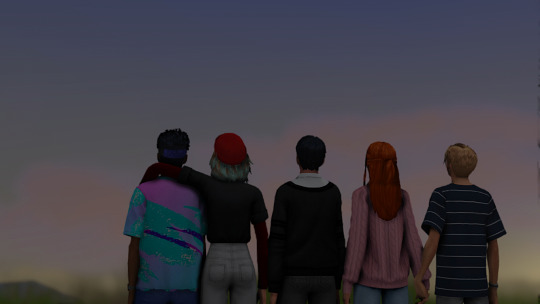
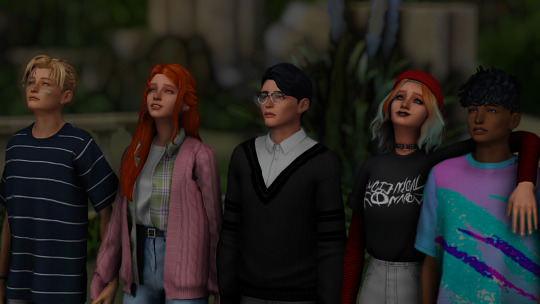
“Time will continue to pass. Everything will pass by. Perhaps for this reason, youth is beautiful. It shines blindingly bright, for just a split second. But you can never go back to it.” -Alexander Goth
#under the weeping willow#the willows#angela pleasant#lilith pleasant#dustin broke#dirk dreamer#alexander goth#ts4#🌌#this pic has been sitting in my laptop for YEARS lmao ;_;
116 notes
·
View notes
Text
The frontier of another world, an alien world, a world tenanted by willows only and the souls of willows.
The Willows by Algernon Blackwood
5 notes
·
View notes
Text
Algernon Blackwood's tale, THE WILLOWS, was cited by H. P. Lovecraft as the greatest tale of supernatural horror in the English language ever written. The action of the story occurs in a desolate and virtually uninhabited region of the Danube River. For miles as far as the eye can see there are small islands covered in stunted willow trees. These islands are slowly being worn away by the rushing waters of the Danube. 2 lone explorers have dared to enter this region in a canoe. The broad expanse, nearly a swamp in some ways, is a subtly haunted landscape where the supernatural is more hinted at than seen or otherwise tangible. In H. P. Lovecraft's most ambitious tale, AT THE MOUNTAINS OF MADNESS, a pair of explorers likewise are faced with a vast and desolate landscape. As in Blackwood's tale the place is windswept and at first sight uninhabited. There are no willows in HPL'S Antarctic adventure, but there are frozen creatures very much structured like stunted trees. Almost certainly Lovecraft's story was an homage to Blackwood's. Of course Lovecraft mentioned the paintings of Russian artist Nicolas Roerich. Roerich is repeatedly cited in his story also. HPL himself was a frequent visitor to the Roerich Museum in NYC. A vibrant mountain scene by Roerich rendered in pastels is featured below. The photo of a river/lake was taken by your curator and resembles certain sections of the Blue Danube. The illustration by Brown appeared in ASTOUNDING STORIES and represents the partially vegtiable entities discovered frozen by the explorers in AT THE MOUNTAINS OF MADNESS. Lovecraft's protagonist proclaims "They were men." The rise and fall of this mighty vegtiable race who faced decline and eventual extinction leaving only stony ruins behind might reflect Lovecraft's own assessment of mankind's future. Certainly HPL's feelings toward NYC can be reflected in AT THE MOUNTAINS OF MADNESS too. (Exhibit 492)
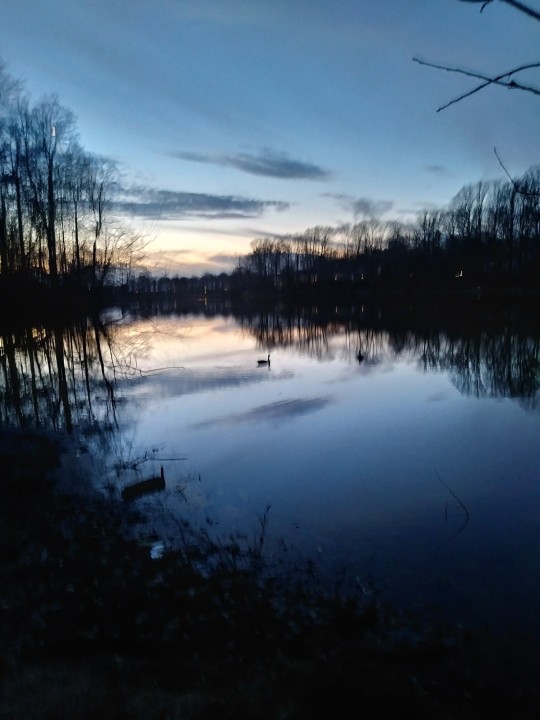


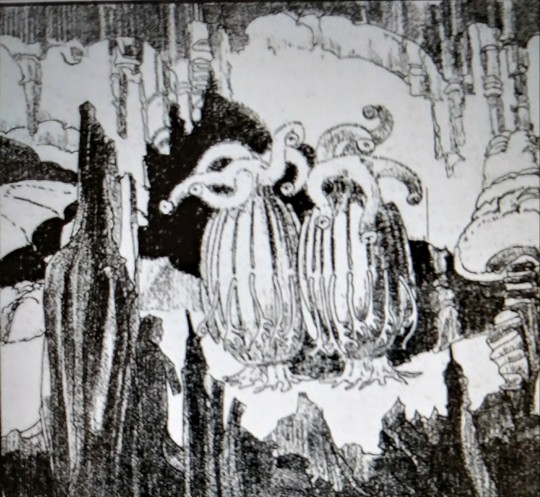
4 notes
·
View notes
Text
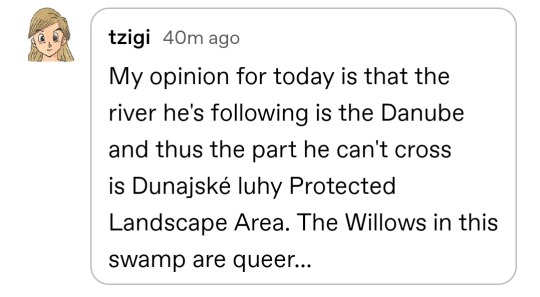
UH OH JON
https://youtu.be/JexumpZ99Ww
14 notes
·
View notes
Text

Book Recommendation:
The Willows - Algernon Blackwood
Genres: Horror, Classics, Short Stories
Keywords: Unsettling Island, Survival, Psychological Horror
Length: Very Short
Rating: 3/5
Find on Goodreads:
Find on StoryGraph:
#the willows#Algernon Blackwood#book recommendations#good book recommendations#reading list#book lovers#book blog#literature#booktok#booklr#goodreads#StoryGraph#reading suggestions#what to read next#good books#bookshelf#reading#books#book quotes#what to read#book slump#horror#classics#short story#survival#psychological horror
2 notes
·
View notes
Text
"Great revelations of nature, of course, never fail to impress in one way or another, and I was no stranger to moods of the kind.
Mountains overawe and oceans terrify, while the mystery of great forests exercises a spell peculiarly its own. But all these, at one point or another, somewhere link on intimately with human life and human experience. They stir comprehensible, even if alarming, emotions. They tend on the whole to exalt."
Algernon Blackwood, The Willows
30 notes
·
View notes
Photo

Title: The Willows (1907)
Author: Algernon Blackwood
Vote: 8/10
Very interesting horror novel that reminded me deeply of Lovecraft's style. After some research I found that Lovecraft considered this book to be one of his favorites and the influences are clearly noticeable. The monsters are never shown directly but you only see the effects on the weak psyche of the characters which is gradually eroded like the sand of the sea.
14 notes
·
View notes
Text
Conquering panic attacks whilst cuddling in a corner with plants and a book.

#academia aesthetic#studyblr#morning routine#chaotic academia#reading#currently reading#the willows#english literature#literature#mental illness#mental health#anxiety
7 notes
·
View notes
Text
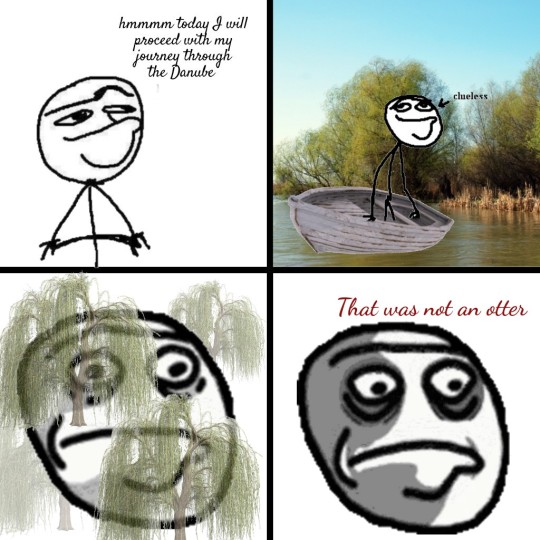
Oh to be a traveler and meet horrors beyond my comprehension on ephemeral sandy islands!
10 notes
·
View notes
Text
These willows never attain to the dignity of trees; they have no rigid trunks; they remain humble bushes, with rounded tops and soft outline, swaying on slender stems that answer to the least pressure of the wind; supple as grasses, and so continually shifting that they somehow give the impression that the entire plain is moving and alive. For the wind sends waves rising and falling over the whole surface, waves of leaves instead of waves of water, green swells like the sea, too, until the branches turn and lift, and then silvery white as their under-side turns to the sun.
- Algernon Blackwood, The Willows
7 notes
·
View notes
Text
The Willows - Algernon Blackwood Review
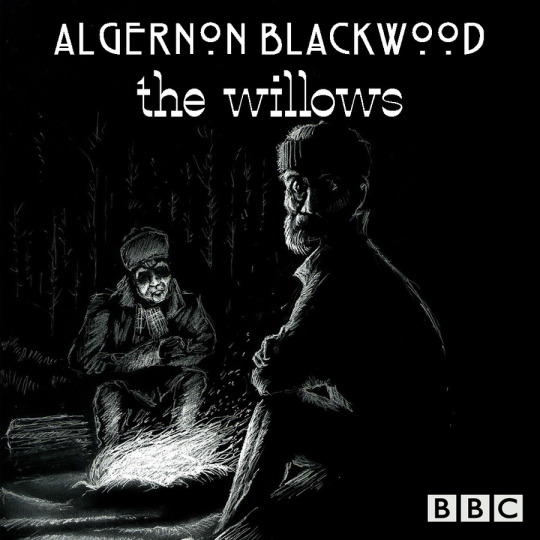
The Willows by Algernon Blackwood is like H.P. Lovecraft meets the Blair Witch. The only problem with that is that The Willows came out in 1907. When you put it in that context, the story is really amazing. It has an incredible sense of place and atmosphere. The island that the two friends arrive at, the very location is menacing. I thought it messed with the two protagonists in the same way that the Blair Witch messes with the characters in The Blair Witch Project.
So I think Blackwood does Lovecraft better than Lovecraft. Lovecraft purportedly loved this story, he wrote about the story in his treatise "Supernatural Horror in Literature". Despite coming a year before Lovecraft's first story, the language in the story never feels antiquated like Lovecraft's does. So if cosmic horror is something that you're interested in, especially the classics, I highly recommend checking this one out!
5/5
#halloween reading 2023#horror#horror fiction#novella#algernon blackwood#the willows#h.p. lovecraft#the blair witch project#blair witch#cosmic horror
1 note
·
View note
Text

pleasantview '99 babies
student ID card template credits to @gloomiee!
#under the weeping willow#angela pleasant#lilith pleasant#dustin broke#dirk dreamer#alexander goth#the willows#ts4 edit#just realized the student tag is kinda pointless but whatever ig lol#im actually in the proses in giving them updated makeover bcs im genuinely tired with their current outfits tbh#🌌
73 notes
·
View notes
Text
Run-on Review Anthology: Algernon Blackwood
Wake up besties, new fave early 20th century horror/weird fiction short story writer just dropped~
~Algernon Blackwood~
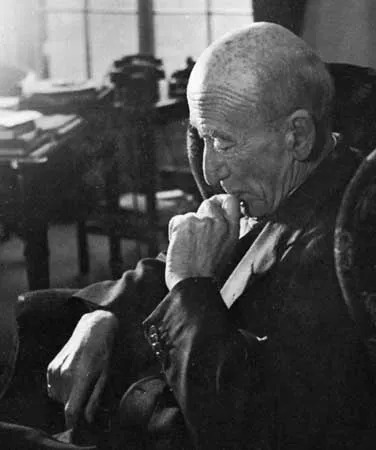
Fig. 1) This guy right here
As someone who was introduced to the genre via HP Lovecraft, here are several reasons why the work of our boy Algernon could be considered better than his contemporary and/or worth your time to read:
-Runs the literary gamut between truly horrifying and joyfully awe-inspiring. Scary not your thing? Al's got you covered!
-Writes in many different formats: short stories, longer novels, even plays! Entertainment for every occasion! (In this post I'll be focusing on short stories because that's my favorite format, but I'll be reading some of his novels in the future!)
-No commitment that I've seen to far to an internally consistent world (a la the Lovecraft Cinematic Universe), allowing him to explore many different themes, settings, and source material
-Absolutely gorgeous and immersive descriptions of place and vibe
-Actually usually describes things very well, instead of leaning on the cosmic horror trope of "oH nooOo it'S TOOo indescrIBAble"
-As far as I can tell so far, is not particularly racist or xenophobic for the time, especially when compared to HP "Hyper-pRacist" Lovecraft
(sidebar; I don't think it's correct to write off the works of long-dead authors due to things that are considered problematic today; however, it's hard to get around that some things are just plain uncomfortable to read with modern eyes. I think that providing context and disclaimers is important, but given that these people are too dead to profit from their work, I don't generally feel bad discussing, recommending, or purchasing their writing)
---
Run On Reviews of Algernon Blackwood Short Stories
The Touch of Pan (originally read in The Moons At Your Door, pdf version linked here): Really really love this one, first one I read by him in a multi-author anthology, it's a comfort read that I keep coming back to, definitely on the joyful/awe end of the spectrum, does refer to idiocy/lunacy but in a way that vibes with me personally neurodivergently and spins it as a neutral-positive thing misunderstood by society at large, lovely lovely lovely, 10/10
The Empty House (originally read in The Algernon Blackwood Collection, it's the first story in the linked pdf): Very solid and intimate ghost story, told through the emotional state of the characters as much as the actually environment and goings-on, spooky but not extremely scary, 7/10
The Damned (originally read in the ABC, pdf link): Excellent haunted house/something's real weird around here story, ever so gradually increases the tension and unsettling feel of the place in inventive modes of discovery, the ending peters out a bit for me but all in all a good read, 8.5/10
The Willows (og ABC, linked): Holy shit yeah this is what I'm fucking TALKING ABOUT this is atmospheric horror done so so right, moody and isolating and creepy and scary, this is the one with the gay subtext you may have heard about, there's a good reason this one is included in so many anthologies, if you can only read one read this one, 10/10
The Wendigo (og ABC, linked): Closest to a "classic" wilderness monster story I'm reviewing here, it's the longest read but well worth it, you can see where it's going pretty early on but it somehow still gets creepier and weirder and worse and oh god kill it, you'll either love it or hate it if you've binged creepypastas and greentext horror stories like I have, this one does have some problematic racial language (reference to an "N-word bar" in describing a black bar, referring to the native american character as "red" and in some "noble savage"-esque ways), as well as colonial-ish "ahaha we're men going on an adventure to unspoiled land pip pip cheerio," but if you can stomach that it's a truly unnerving story that will make you never want to camping ever again in your life, 9/10
Ancient Sorceries (originally read in the Ancient Sorceries anthology, pdf linked): I so badly wanted to like this one more, the setting is absolutely magical and the buildup is excellent, but it kind of runs out of steam for me with the reveal (which isn't super fair bc this story predates all the works that make the reveal a tired trope in my mind), still would recommend a gander, 10/10 up until part IV, 6/10 after, overall 8/10
The Listener (og AS, linked here): If there's one to skip in this whole list it'd be this one, another ghost story but not as good as others mentioned here, I think I may be missing historical context that would add weight to the horror (I wont spoil, but if you read it and know more about the subject of the reveal, please enlighten me), still a nice little mystery with some interesting characters and a creepy ghost, 5/10
The Sea Fit (og AS, linked here): Finishing out somewhat strong, extremely compact yet very dense, no wasted words, but paints extremely clear characters, setting, and events, somebody please make this a short film I will throw money at the kickstarter, spooky and unsettling but slightly more on the awe-inspiring end of the spectrum, 9/10
#all of these are public domain frankly I'd love to see films and animations of his work#take my money#algernon blackwood#blackwood#horror stories#short stories#book review#weird fiction#the touch of pan#the willows#run-on review#ror
2 notes
·
View notes
Text
Lovecraft considered Algernon Blackwood's tale, THE WILLOWS, to be the finest supernatural story ever written in the English Language. It is my contention that he modeled the single most ambitious of his own stories after Blackwood's masterpiece. AT THE MOUNTAINS OF MADNESS would probably have been Lovecraft's proudest moment. Unfortunately, though the story appeared serialized in three issues of the science-fiction magazine, ASTOUNDING STORIES, it was abridged and filled with typos. As far as the similar themes in THE WILLOWS and 'MTS': Both tales feature explorers discovering vast and desolate regions. THE WILLOWS takes place on a broad region of the Danube River. For mile after mile there are only small islands covered in stunted willow trees. Both tales depict terrific winds. In THE WILLOWS the islands that dot the landscape are constantly being eaten away by the waters of the Danube as they rush forward. Lovecraft's tale on the other hand occurs in an unexplored region of Antarctica. In that story a mighty glacier (a frozen river) moves at an infinitely slow pace through the ancient city of the 'old ones' and likewise will one day grind it to dust - Lovecraft here plays with his favorite dimension-time. Another theme shared by each story is that of a mirage acting as a premonition. In THE WILLOWS the pair of lone travelers sees what they at first believe is a human body spinning in the current. The pair look again and realize the thing is really an otter playing near the shore. In 'ATMOM' the adventurers - in this case exploring Antarctica - see a mirage in the distance of the very ruined city they will soon discover. In this mirage, however, the city appears to be in pristine condition and crawling with movement as it may have looked a million years previously. Both stories feature tents and odd footprints or tracks. In the case of THE WILLOWS it is suggested that the stunted willow trees are actually able to move about - though the explorer-friends never actually see this happen. In Lovecraft's tale, reports come to the protagonists that alien creatures, not unlike trees in some respects and definitely as much plant as animal are discovered frozen in a cave. In their frozen state the lobes of their starfish-like heads droop down around their barrel-shaped bodies - reminiscent of the branches and trunk of a willow tree. As in THE WILLOWS our Antarctic explorers never actually see one of the creatures alive and moving. In THE WILLOWS the narrator and his friend, 'The Swede', have shared several outdoor adventures previously. The narrator appreciates that his pal is dependable and somewhat lacking in imagination. Now, however, The Swede, suddenly developes the ability to 'channel' the minds of the terrible 'spirits' of the mysterious region. When Lovecraft's Antarctic adventurers finally enter the ruined city of the alien beings - they refer to them by a variety of nebulous terms - they seem to be able to 'read' the history of the beings in the bas-relief carving they left behind with preternatural detail and precision. In both tales there is a hint of some even greater and more powerful menace beyond even the haunted willow landscape in one case, or the alien-built ruins of Antarctica in the other. In THE WILLOWS the pair of explorers - traveling through the haunted region in a canoe - are able to escape because another victim has been claimed by the spirits there. This time they see the illusion of a creature spinning in the waves again. Here it is not an otter, but a human corpse! In Lovecraft's tale a perusing monster- heard more than seen- is slowed as it stops to feed upon huge, grotesque white penguins in its path. There are other thematic and structural similarities between the two men's stories, but it is almost certain that Lovecraft was making an effort to build the same kind of atmosphere of sustained dread and cosmic fear that he appeciated so profoundly in Blackwood's greatest masterpiece. (Exhibit 287)


9 notes
·
View notes